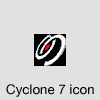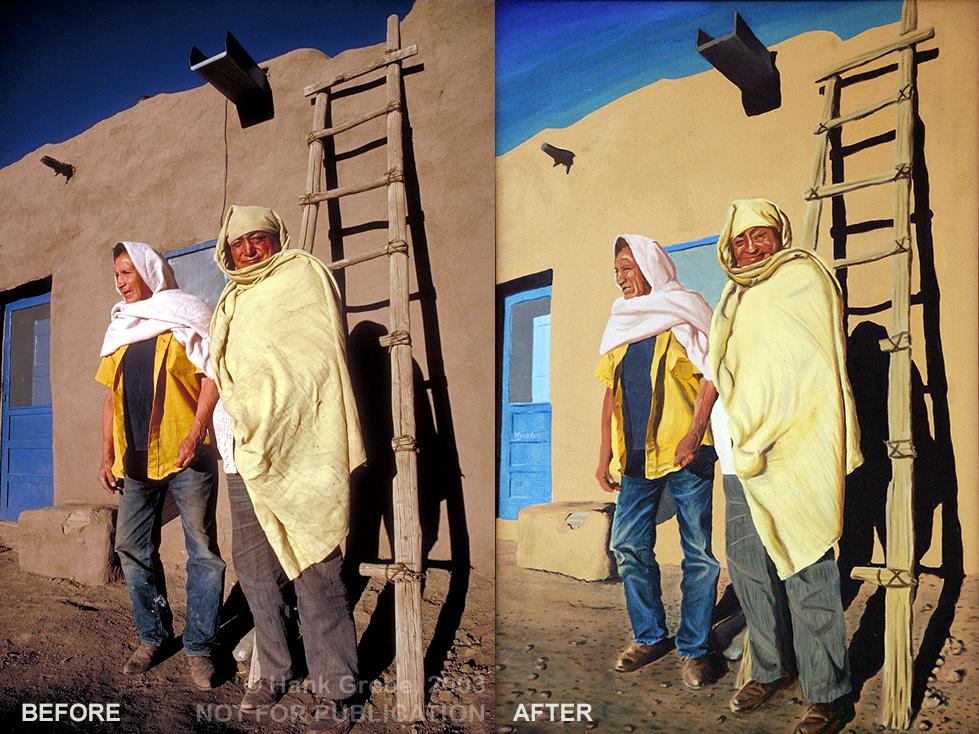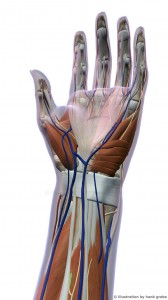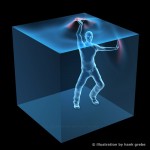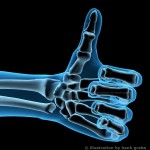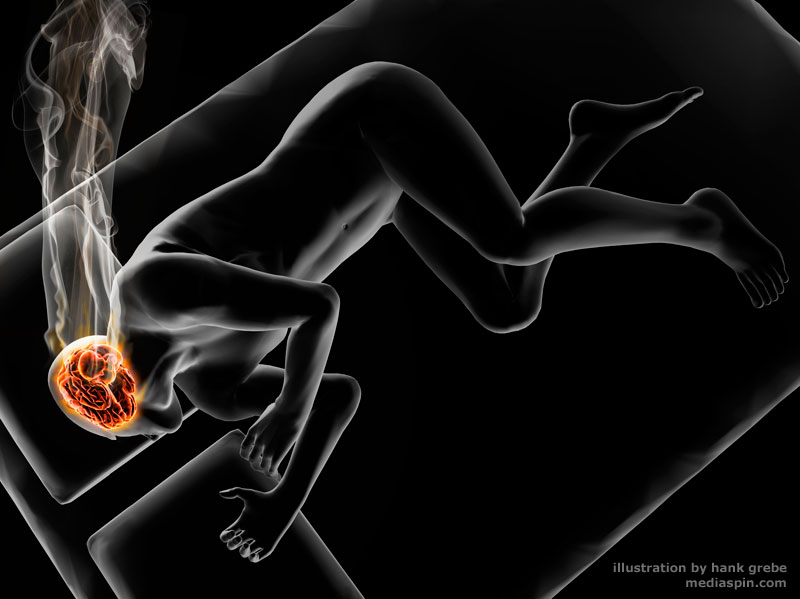Category ArchiveArt
Illustration &User Interface SpinMeister on 21 Nov 2015
Designing a New Logo for Leica Geosystems Cyclone
[Originally written in 2015, this post has been updated Feb. 28, 2022. Obviously, the logo artwork is no longer “new” and I have no knowledge whether or not it is presently in use. – HG]
In the beginning, there was the 32 x 32 Cyclone 7 icon, the only logo artwork available. This image had been used for a number of generations of Leica Geosystems’ 3D point cloud processing software, Cyclone. With the launch of Cyclone version 8, it was high time for a new look, and new logo to accompany the powerful new 3D software update. So began the search for a new look, a refreshed identity embodied in a graphical symbol, a new logo.
My first inclination was to explore completely new concepts and looks, showing that Cyclone’s connection to the 3D world and playing off of the cyclone, tornado, whirlwind concept.

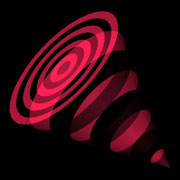
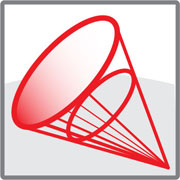
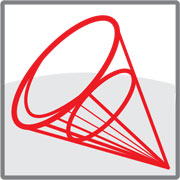
Using Autodesk Maya and Adobe Illustrator, I tinkered with a conical theme, keeping in mind that Cyclone’s letter “C” might be worked into it.
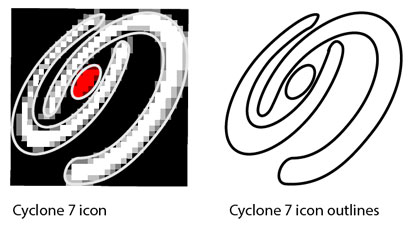
Not being completely sold on the cones, it was time to revisit the original icon, and break down what it was about. Outlining the artwork in Illustrator, it became clear that the logo was a pair of letter “C”s with a red dot, viewed in 3D perspective. I decided to try and recreate this using a 3D camera view in Maya.
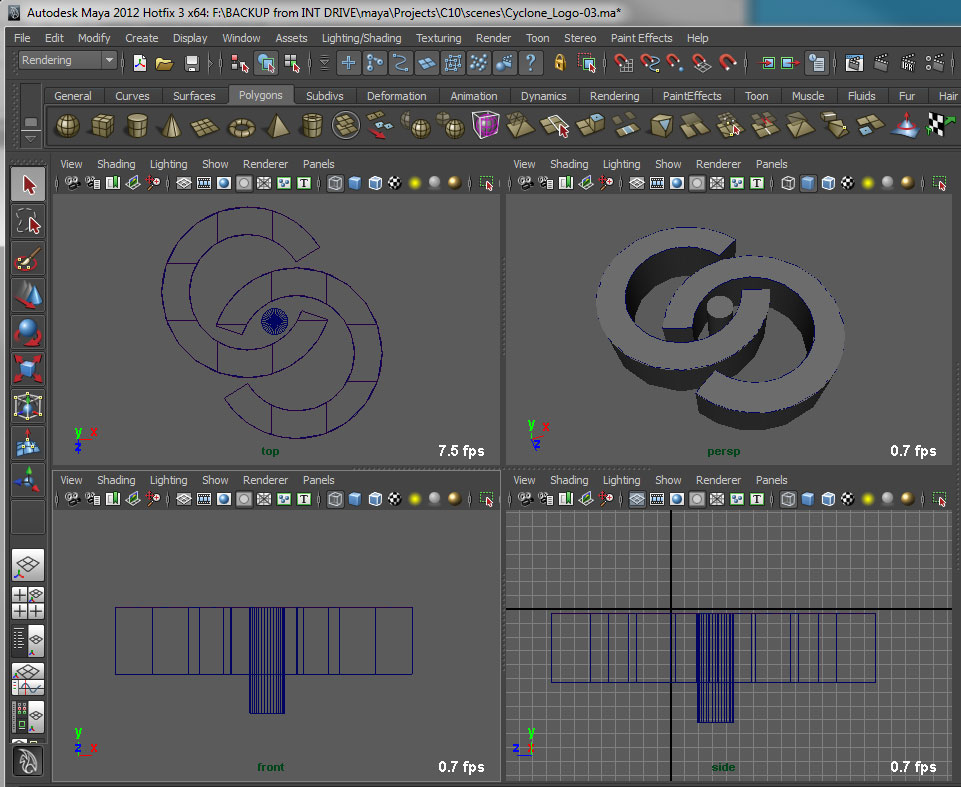
Here we see two C’s extruded, with a cylindrical dot placed in the center. Getting on the right track for 3D software now! More refinement to be done.
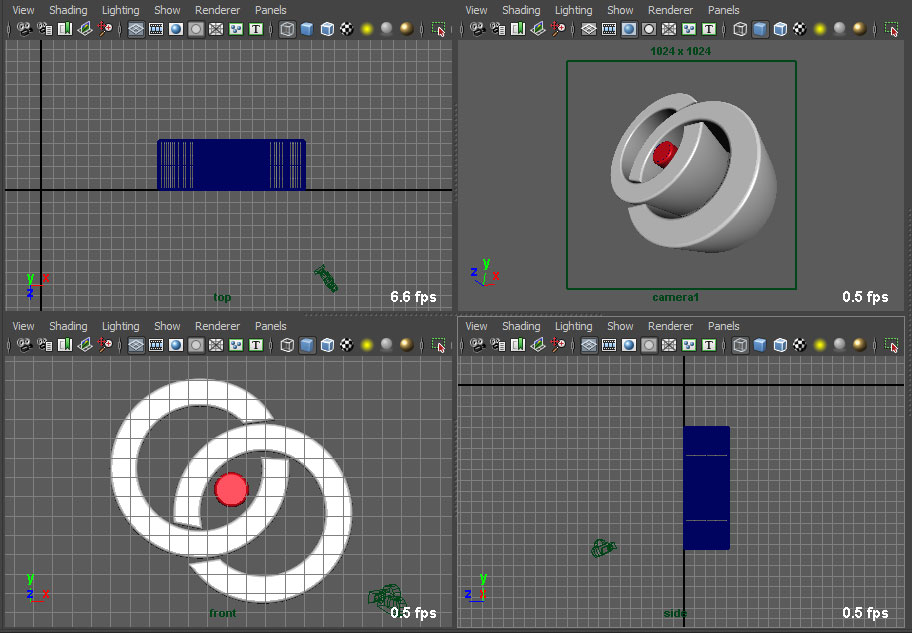
Here a slight rounded bevel has been added to the extrusion, and textures to the 3D geometry. Time to explore more surface treatments, lighting and rendering.

The rendering on the left has a few more directional lights added to the Maya screen preceding it. The rendering on the right is the result of adding a brushed metal, stainless steel style texture and bump map to the rendering. The camera was changed to a wider angle lens setting, to force a more oblique, dynamic perspective, closely matching the original Cyclone 7 logo. The next test would be to composite the new logo into the Cyclone 8.0 splash screen.
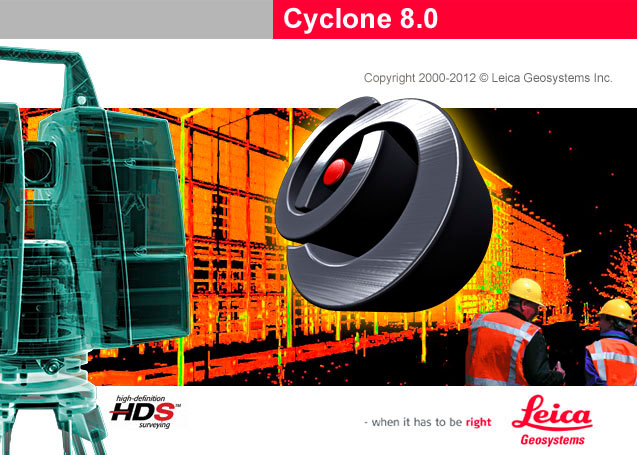
With this, the small product management group felt we had a winner, and were anxious to release the new software. Upon further review, we had not yet scored a goal, and so gave it another shot along with helpful suggestions. The final logo is brighter and easier to read and interpret, and still holds true to the 3D software roots of Cyclone. The new logo was launched proudly with Cyclone 8.

The logo design lives on in the current Cyclone version 9.1. The style has been adopted for branding Leica’s CloudWorx for AutoCAD software, and the JetStream high point cloud rendering system.
Art &Illustration &photography SpinMeister on 26 Nov 2014
Taos Time
In October of 1977 I was on a road trip across the American southwest and made a stop in Taos, New Mexico to look around the pueblos and the area made famous by an art colony early in the 20th century. I did not like the way many tourists were casually snapping photos without respect for the inhabitants, the Taos Pueblo Indians. When I felt the right time had come to take a few photos, I asked these two friends if I could take their picture. They said, OK, if I would give them a ride into town, which I agreed to. I think the photo is the best achievement, and my oil painting from it I do enjoy looking at in my own collection of paintings. I spent a little more time with these two fellows, since their trip to town involved visiting a liquor store. Then they wanted to go out to a big field to drink and look at a herd of buffalo belonging to the Taos Indians. After that, we returned to the Taos village and entered the area for residents only. One of them invited me to sleep over at his home, but I was afraid and decided to leave. Anyway, the Yankees were in the World Series at that time and I wanted to go listen to that on my car radio. I kind of doubt that I missed out on a spiritual experience with a drunk Indian, but you never know.
There is a longer, more detailed account of this in my diary of that time, but this is an online blog, so that’s all you get.
Art &Illustration &Media &Projects SpinMeister on 23 Apr 2013
Stocked Up with Illustrations

Here is a link to many of my illustrations represented by SuperStock.com – https://superstock.com/stock-photography/1428R-
My collection has grown to over 400 images there, and quite a wide variety. I try and strike a balance between scientific medical illustrations and imaginative human conditions that tell a story.
I use Autodesk Maya, SmithMicro Poser and Adobe Photoshop in my common illustration workflow.
SuperStock markets my images all over the world, for books, magazines, and other media.
Illustration &Media SpinMeister on 29 Oct 2012
Hands On
I sprained my wrist trying an advanced yoga pose. Imagine being in a shoulder stand and lowering your legs down while propping up your arching waist with your hands. If done slowly, carefully and with enough flexibility, your feet touch the ground as your hands support your lower back in a sort of shoulder stand back bend. I was able to do it, when I last tried it ten years ago, but I lost some flexibility, and the bending put a strain on my wrist. So I decided to explore the anatomy of the hand in a series of recent illustrations.
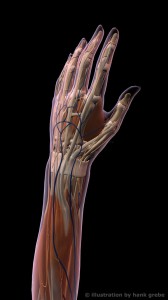 I rendered these Zygote models in Maya in a variety of lighting and camera positions. The detail is an anatomically correct female hand and wrist. The fianl renders were 8K in the longest dimension.
I rendered these Zygote models in Maya in a variety of lighting and camera positions. The detail is an anatomically correct female hand and wrist. The fianl renders were 8K in the longest dimension.
I had another concept, “Breaking out of the Box”, an inspirational illustration of a struggle for freedom. The figure was done in Poser, imported into Maya, where I added the lighting, surface texture, and added dynamic cloth to the cube faces that are being stretched. The skeletal Facebook “like” sign, is just having some fun with Poser, which for me is always fast and simple for working out ideas with.
By the way, the wrist is fine now, but I’m not trying to do that advanced yoga pose again, for awhile now.
Art &Illustration &Internet &Mobile &Projects SpinMeister on 06 May 2012
Visualizing Social Networking
Nice Tweeting You
Due to the positive response and the editorial buzz around social networking themes, I’ve been motivated to design additional illustrations along these lines for my stock image agency, Superstock. Here are a few of my favorites. I’ve also continued making medical illustrations as well, the most recent series involve new treatments of brain and heart images.
Art &Personal &Projects SpinMeister on 09 Apr 2010
Human Conditions
Too much brandy?
Over the last three weeks I’ve been back at it with a whole new batch of “human conditions” illustrations for my good friends at Superstock. To justify paying for the recent Poser 2010 upgrade, I’ve been using it to set up the character poses and then outputting the files to .obj format to import into Maya (ew, geeky, gory file format details!). Once in Maya, I set up a number of cameras in 3D space, create a few props for realism, add my favorite X-ray, flesh and bone shaders, test render, and then render my 8K images in layers. The layers then need color correction and polygon touch up in Photoshop as part of the final compositing process. (Spell check still doesn’t like compositing, haha.)
Below are a few of my favorites. I’ll have done over 100 of these after another week or so. Endless good times. (Click thumbnails to see the big pictures.)
Art &Internet &Projects SpinMeister on 29 Mar 2010
Life’s Pathways
Life is complicated. There are many choices, paths and decisions for us to make in search of our destiny. There are paths we follow regularly that we are not even conscious of, such as the metabolic pathways keeping us alive in our immune systems.
I had little understanding of these paths, until I began these illustrations for Epitomics, a biotech company that manufactures over 1,000 different antibodies from rabbits. According the Wikipedia, “Antibodies are gamma globulin proteins that are found in blood or other bodily fluids of vertebrates, and are used by the immune system to identify and neutralize foreign objects, such as bacteria and viruses.”
The maps are being carefully constructed in Adobe Illustrator from Epitomics diagrams and then imported into Flash to add linkage to their many unique antibody products. Click here to see the current Flash Pathway maps, and there are more in the pipeline, and more data to be linked using XML.
 Obviously, it is important to faithfully construct the pathway maps with scientific accuracy. The spherical antibody nodes remind me of paintings I’ve made of beach stones, whose arrangements are pretty much random and meaningless. I’ve been thinking about picking up the paint brushes again, and working on a few more of “the rock paintings.” To make the stones more interesting, and their arrangements perhaps more meaningful, I plan on using image processing techniques, Photoshop filters and 3D rendering before projecting the design onto blank canvas. I’m thinking about painting layers of imagery, similar to constellation star maps and the work of Julie Mehretu. It’s a pathway I’ll have to decide to go ahead on, while my antibodies are still doing their quiet work to keep me in good health.
Obviously, it is important to faithfully construct the pathway maps with scientific accuracy. The spherical antibody nodes remind me of paintings I’ve made of beach stones, whose arrangements are pretty much random and meaningless. I’ve been thinking about picking up the paint brushes again, and working on a few more of “the rock paintings.” To make the stones more interesting, and their arrangements perhaps more meaningful, I plan on using image processing techniques, Photoshop filters and 3D rendering before projecting the design onto blank canvas. I’m thinking about painting layers of imagery, similar to constellation star maps and the work of Julie Mehretu. It’s a pathway I’ll have to decide to go ahead on, while my antibodies are still doing their quiet work to keep me in good health.
To see the artwork of Julie Mehretu, please visit her page on Artsey.net. (Update July 18, 2015)
Art &Media &Personal SpinMeister on 19 Feb 2010
Stock Illustration Sightings
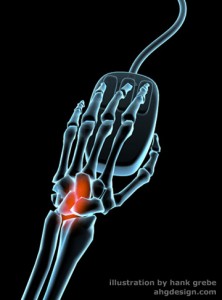 I have over 300 computer-generated images in circulation through a stock photography agency, most of them are 3-D images modeled, textured and rendered using Autodesk’s Maya software. I receive monthly statements and royalty checks for sales made, and at times they have been substantial. It’s a very good business relationship. The trouble is, the agency never tells me who purchased the image or where it is being published.
I have over 300 computer-generated images in circulation through a stock photography agency, most of them are 3-D images modeled, textured and rendered using Autodesk’s Maya software. I receive monthly statements and royalty checks for sales made, and at times they have been substantial. It’s a very good business relationship. The trouble is, the agency never tells me who purchased the image or where it is being published.
Today I was thumbing through an investment magazine, SmartMoney, and I saw an image in an article about disability insurance and carpal tunnel syndrome. The image looked familiar, so I checked my computer files, and sure enough, it’s mine. The trouble is, my stock agency didn’t attach my name to the picture credits. Not a deal-breaker, but it might help my sales if I had a credit next to my images. Then clients who like my work could ask for more, and I’d know for sure if it was one of the many I’ve done.

Another similar image appeared in one of those catalogs full of gimmicky personal and household devices, and those images rarely get credits, and that’s OK with me.
